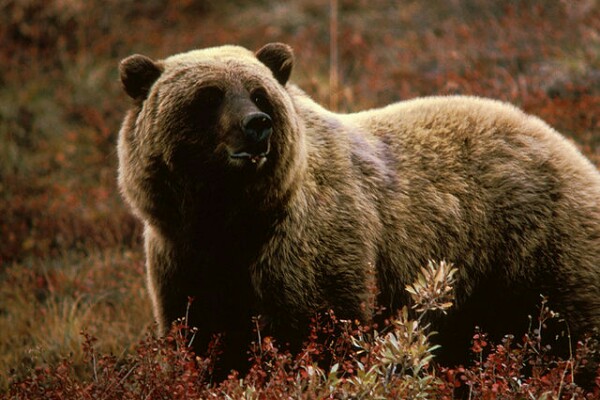
While visiting Glacier National Park on a Road Scholar birding trip this week, we heard that a mountain biker was killed by a bear just south of the Park. The incident made international news.
When a bear kills someone, wildlife officials investigate by collecting information on what happened, DNA samples of the bear and, ideally, the bear itself. If it’s clear the bear was predatory (if it ate or wanted to eat the person) then the bear is euthanized. If it was defending itself or cubs, officials weigh the evidence and it often goes free.
As of this writing the investigation is still underway, the bear hasn’t been found, and it’s not confirmed that it was a grizzly. The only thing we know for sure is that everyone was surprised — the bear, the victim, his fellow cyclist, and the local community. Montanans are especially surprised and saddened because the victim was a very knowledgeable local resident, an officer in the U.S. Forest Service who knew all about bear safety.
How could such a thing happen? Imagine this: A mountain biker is traveling downhill fast on a silent bike on a narrow trail through a thicket. There’s a bear in the thicket but there is no sound to warn the bear and no time for it to move away. Bears have a chase instinct and will pursue things that are moving fast. UPDATE JULY 3: The cyclist collided with the bear before the fatal attack.
Here’s more about what happened near West Glacier, Montana:
Hopes Dimming But Search Continues for Bear that Killed Cyclist Near Glacier Park
Were we worried about bears while visiting the park? No. We followed the guidelines on what to do in bear country. These are from the Glacier National Park website:
- Never travel alone. Don’t trail run. (There were 11 of us walking and birding.)
- Carry bear spray and know how to use it. (Our guide carried this form of pepper spray that has a special nozzle.)
- Make human noise especially talking, singing, clapping or calling out at regular intervals. NPS says, most bear bells are not enough. (We talked a lot!)
- Never leave food, garbage and scented items unattended. Always secure them. (We were always with our food, packing in and packing out.)
- Be aware of your surroundings, especially when you are near bear foods, running water or thickets. Notice bears signs. (Our guide showed us bear claw marks and dig-outs.)
Bear attacks are extremely rare events. There would be even fewer if we could eliminate the element of surprise.
(photo from Wikimedia Commons. Click on the image to see the original.)
p.s. We never saw any bears at all, not a grizzly, not even a black bear. It would have been nice to see a grizzly on a distant hillside from the car — but only under those circumstances!
A couple of years ago I was in Glacier National Park in June and our group encountered a bear jam caused by a pair of adult Grizzly Bears. I was one of two in our group to actually see one of the bears. We also saw several Black Bears including one wandering around our lodging area.
Richard, I guess you were lucky to see them from the car. We saw no bears at all.